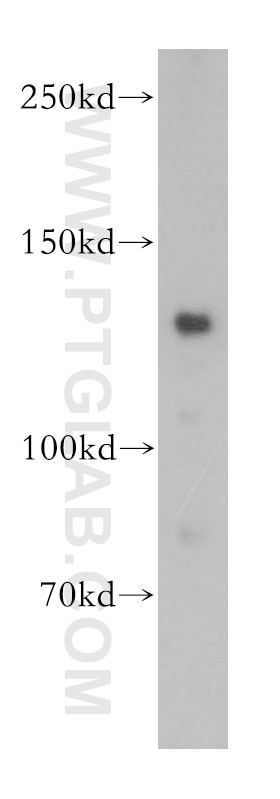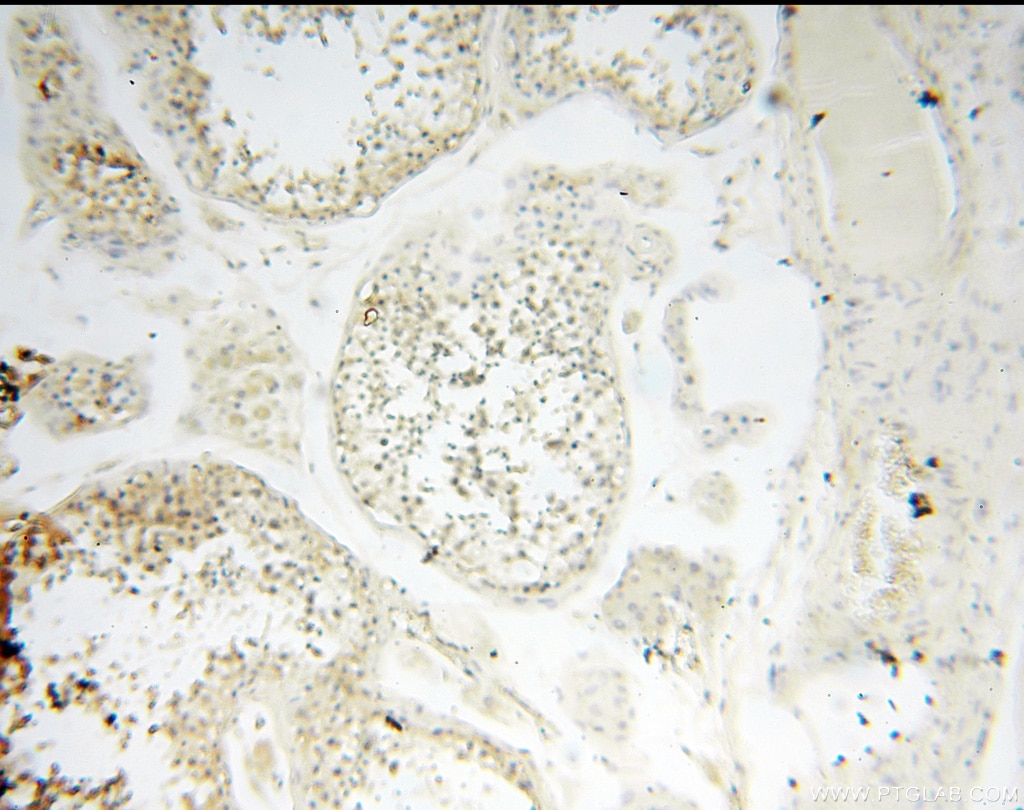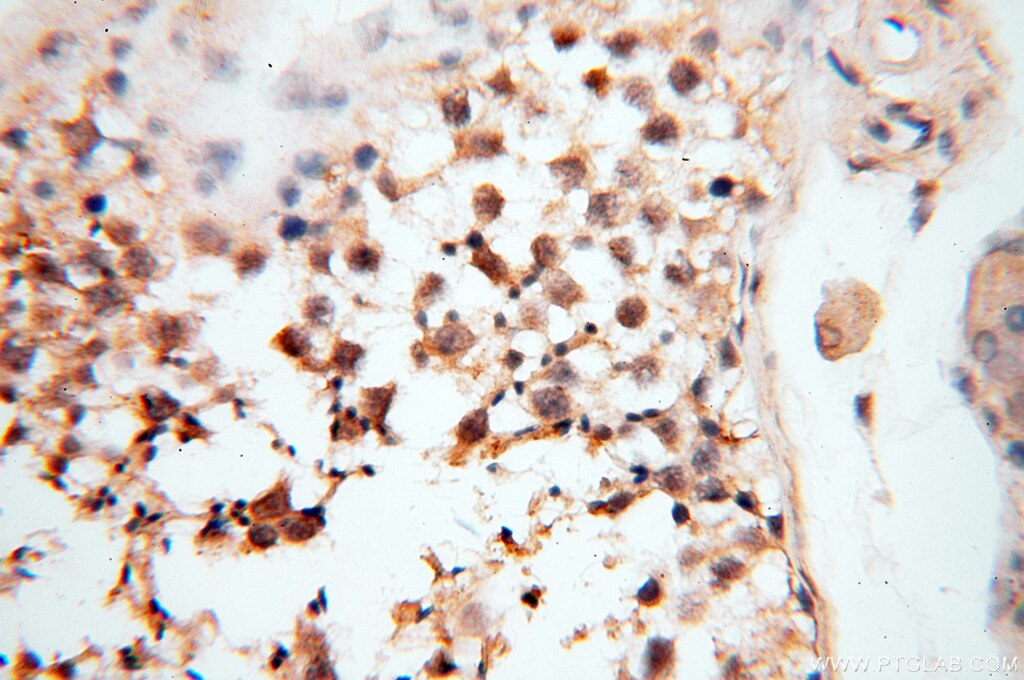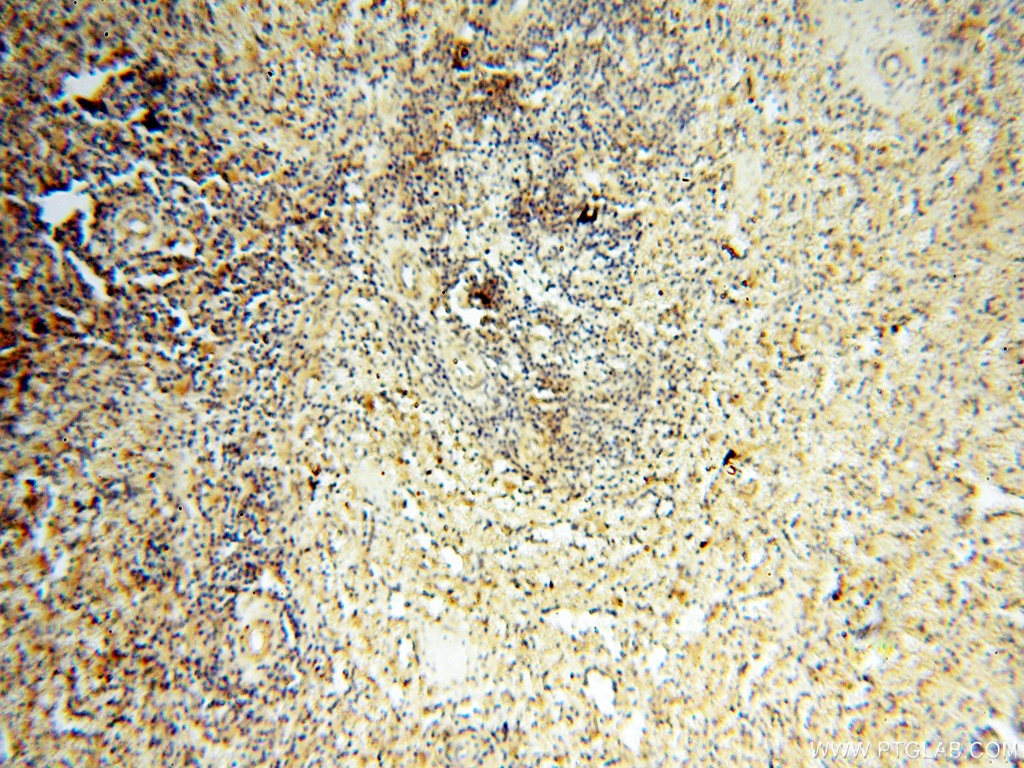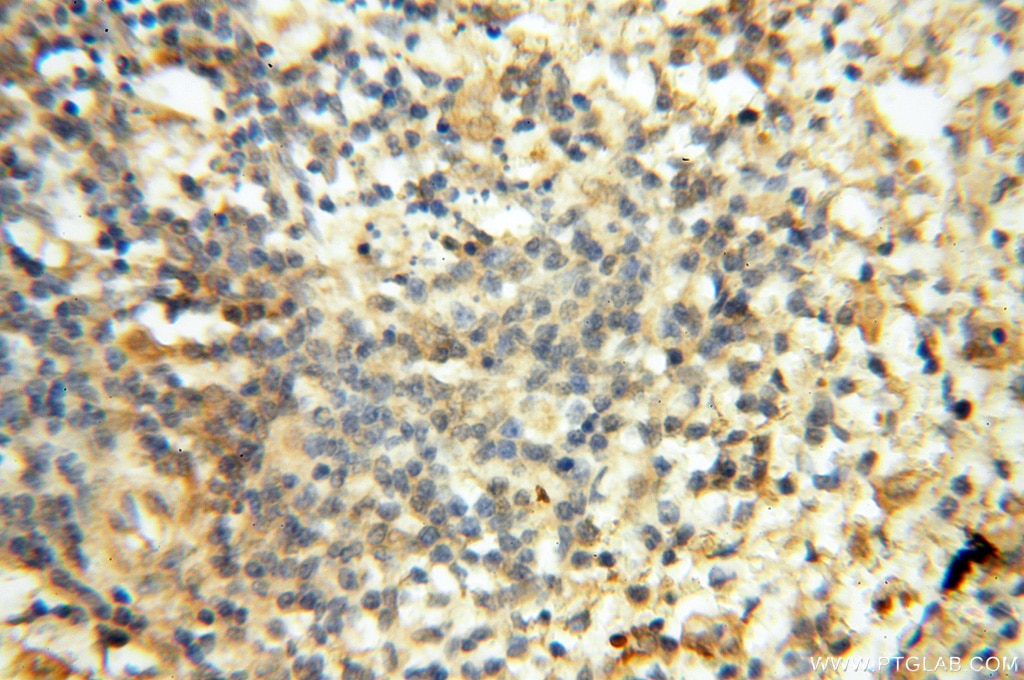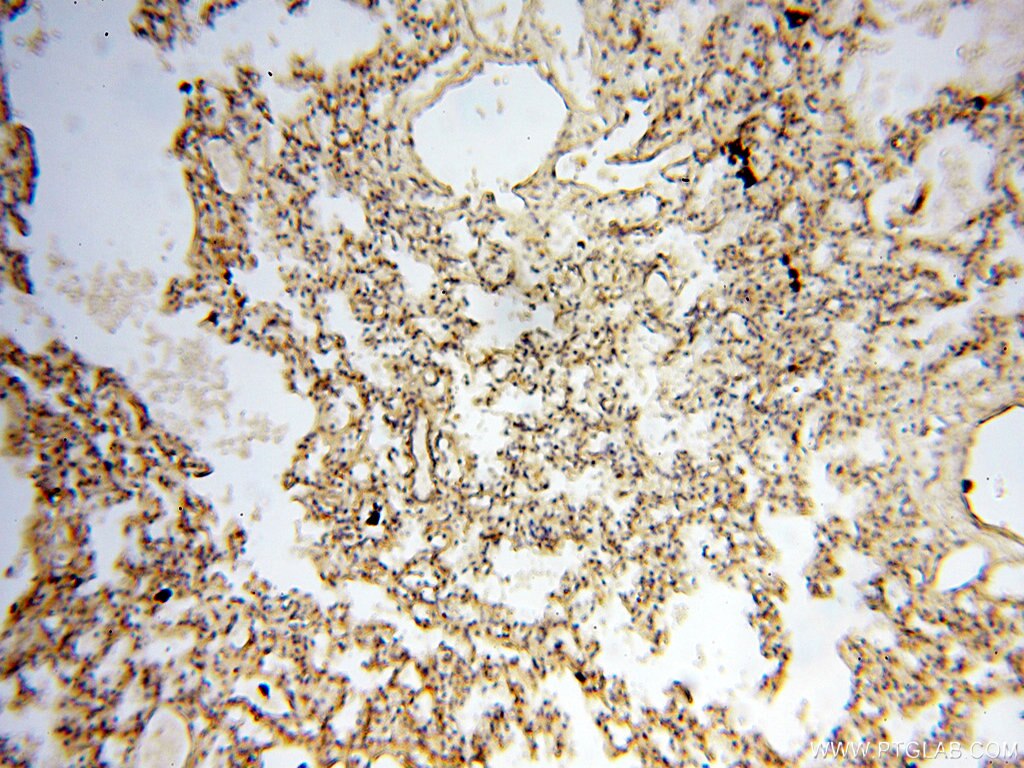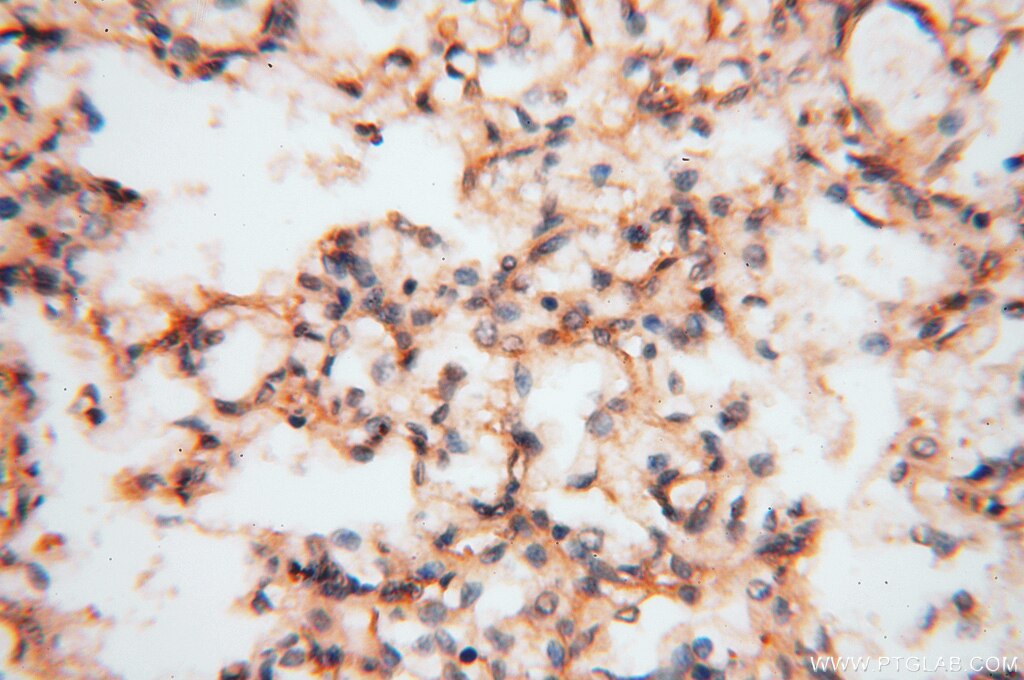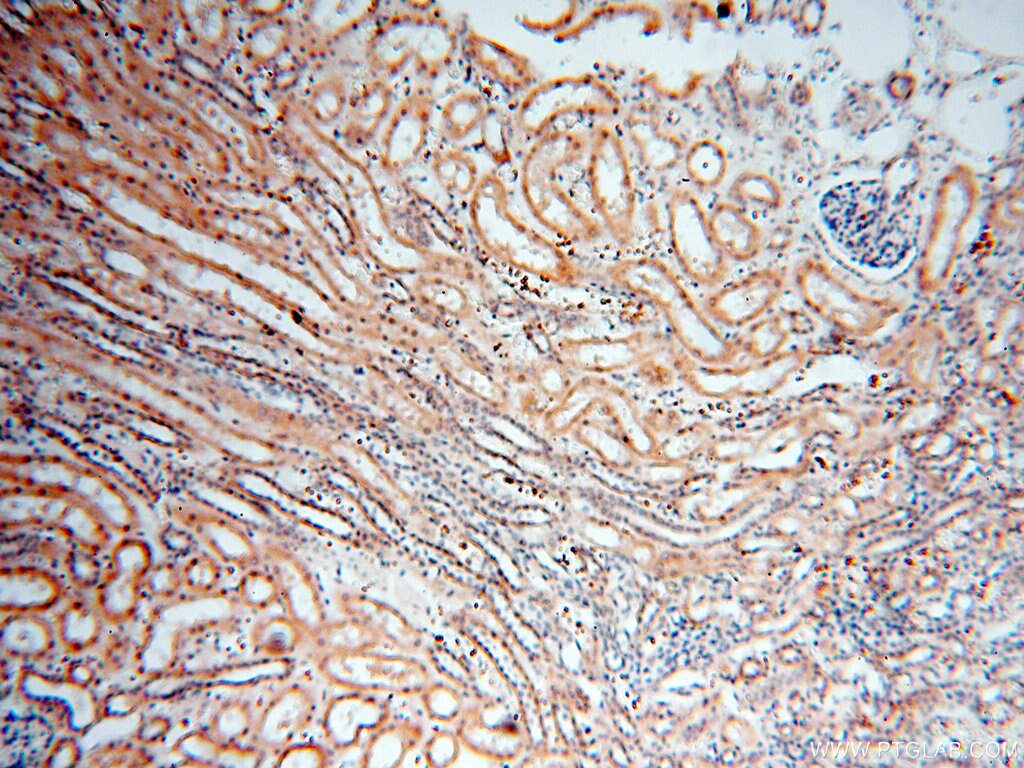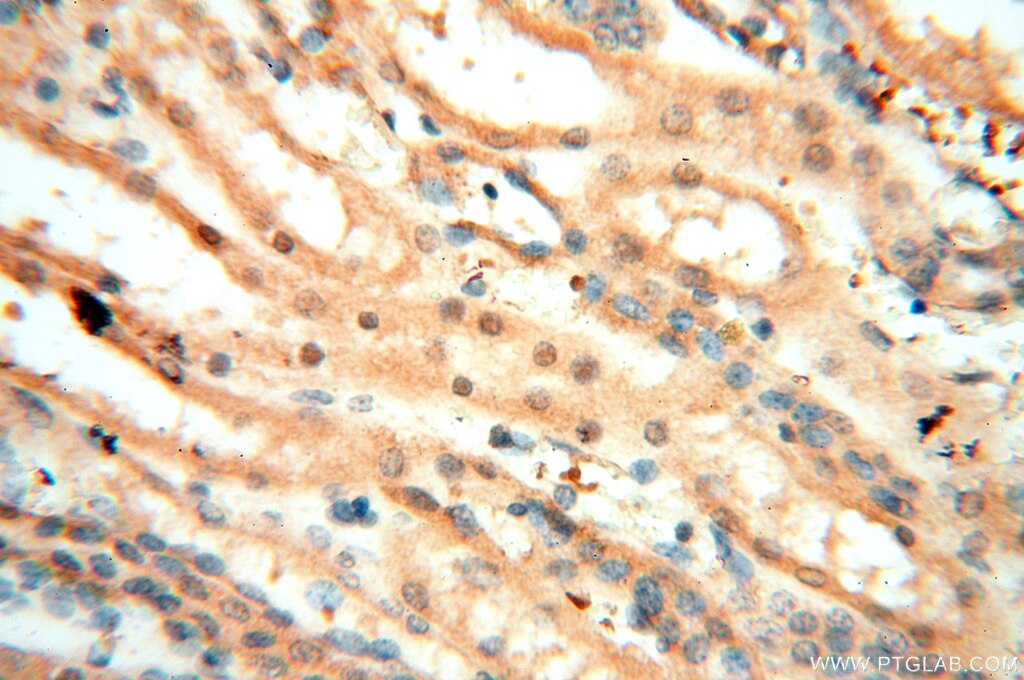CARD6 Polyklonaler Antikörper
CARD6 Polyklonal Antikörper für WB, IHC, ELISA
Wirt / Isotyp
Kaninchen / IgG
Getestete Reaktivität
human und mehr (2)
Anwendung
WB, IHC, ELISA
Konjugation
Unkonjugiert
Kat-Nr. : 18029-1-AP
Synonyme
Geprüfte Anwendungen
| Erfolgreiche Detektion in WB | HepG2-Zellen |
| Erfolgreiche Detektion in IHC | humanes Hodengewebe, humanes Nierengewebe, humanes Lungengewebe, humanes Milzgewebe Hinweis: Antigendemaskierung mit TE-Puffer pH 9,0 empfohlen. (*) Wahlweise kann die Antigendemaskierung auch mit Citratpuffer pH 6,0 erfolgen. |
Empfohlene Verdünnung
| Anwendung | Verdünnung |
|---|---|
| Western Blot (WB) | WB : 1:500-1:2000 |
| Immunhistochemie (IHC) | IHC : 1:20-1:200 |
| It is recommended that this reagent should be titrated in each testing system to obtain optimal results. | |
| Sample-dependent, check data in validation data gallery | |
Veröffentlichte Anwendungen
| WB | See 2 publications below |
Produktinformation
18029-1-AP bindet in WB, IHC, ELISA CARD6 und zeigt Reaktivität mit human
| Getestete Reaktivität | human |
| In Publikationen genannte Reaktivität | Affe, Ratte |
| Wirt / Isotyp | Kaninchen / IgG |
| Klonalität | Polyklonal |
| Typ | Antikörper |
| Immunogen | CARD6 fusion protein Ag12595 |
| Vollständiger Name | caspase recruitment domain family, member 6 |
| Berechnetes Molekulargewicht | 1037 aa, 116 kDa |
| Beobachtetes Molekulargewicht | 130 kDa |
| GenBank-Zugangsnummer | BC093825 |
| Gene symbol | CARD6 |
| Gene ID (NCBI) | 84674 |
| Konjugation | Unkonjugiert |
| Form | Liquid |
| Reinigungsmethode | Antigen-Affinitätsreinigung |
| Lagerungspuffer | PBS with 0.02% sodium azide and 50% glycerol |
| Lagerungsbedingungen | Bei -20°C lagern. Nach dem Versand ein Jahr lang stabil Aliquotieren ist bei -20oC Lagerung nicht notwendig. 20ul Größen enthalten 0,1% BSA. |
Hintergrundinformationen
The caspase recruitment domain (CARD) is a homotypic protein-protein interaction module that links components of signal transduction pathways implicated in the regulation of apoptosis or adaptive or innate immunity. Although much progress has been made in assigning precise roles to most CARD-containing proteins, the functions of the 1,037-amino-acid (aa) human and 1,175-aa mouse CARD6 proteins are still unknown. CARD6 has a unique structure in that it contains the CARD at the N terminus, a glutamic acid-rich region following the CARD, and a proline-rich region at the C terminus. CARD6 also harbors a 350-aa region with similarity to upregulated gene 4 (URG4), a protein that is induced in response to hepatitis Bx antigen overexpression and exerts a positive effect on proliferation. Both CARD6 and URG4 share structural features with members of the multifaceted, IFN-inducible GTPase (IFNiGTPase) superfamily, which contains some of the proteins most abundantly induced during cell-autonomous immune responses. The calcualted molecular weight of CARD is 116 kDa, but modified CARD6 is about 130 kDa. (PMID: 18160713)
Protokolle
| PRODUKTSPEZIFISCHE PROTOKOLLE | |
|---|---|
| WB protocol for CARD6 antibody 18029-1-AP | Protokoll herunterladen |
| IHC protocol for CARD6 antibody 18029-1-AP | Protokoll herunterladenl |
| STANDARD-PROTOKOLLE | |
|---|---|
| Klicken Sie hier, um unsere Standardprotokolle anzuzeigen |
Publikationen
| Species | Application | Title |
|---|---|---|
J Cell Mol Med Exercise ameliorates insulin resistance and improves ASK1-mediated insulin signalling in obese rats. | ||
Zool Res Ribosome-associated pathological TDP-43 alters the expression of multiple mRNAs in the monkey brain |
